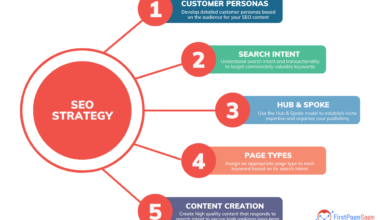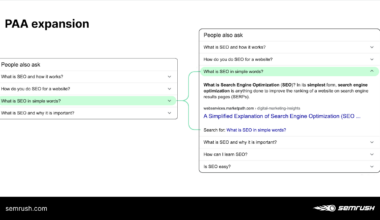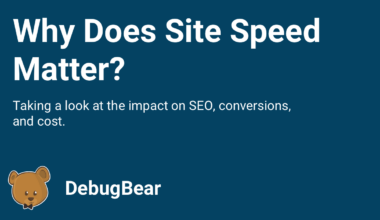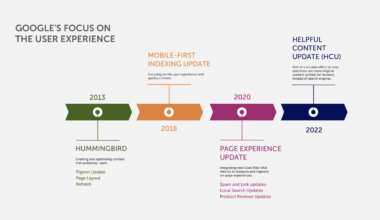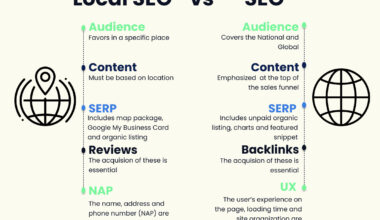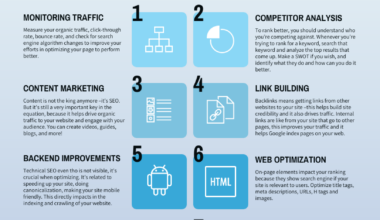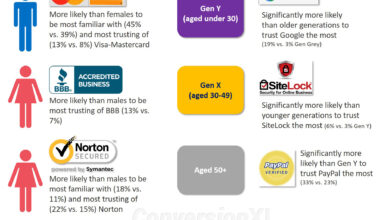Introduction to Site Structure for SEO
As a website owner, you might have heard about the importance of SEO (Search Engine Optimization) for your website. SEO is a set of techniques and strategies that help your website rank higher in search engine results pages (SERPs). Higher rankings mean more visibility, traffic, and potentially more revenue for your website.
One of the critical elements of SEO is site structure. Site structure refers to the way your website’s pages are organized and linked together. A well-structured website can help search engines crawl and index your pages more efficiently, resulting in higher rankings.
In this article, we’ll explore why site structure matters for SEO and how you can optimize your site structure to improve your website’s rankings. We’ll cover the importance of organizing content, navigation and user experience, URL structure, and mobile optimization. By the end of this article, you’ll have a clear understanding of how site structure impacts SEO and how to optimize your website for better rankings.
Importance of Organizing Content
Organizing your website’s content is crucial for both user experience and SEO. A website with disorganized content can confuse users and make it difficult for search engines to understand your website’s purpose and relevance.
Here are some reasons why organizing content is essential for SEO:
1. Helps search engines understand your website’s purpose: When search engines crawl your website, they analyze the content on each page to determine its relevance to a particular search query. If your website’s content is disorganized, search engines might have trouble understanding your website’s purpose and relevance, resulting in lower rankings.
2. Improves keyword targeting: Organizing your content can help you target specific keywords related to your website’s niche. By grouping related content together and optimizing it for specific keywords, you can improve your website’s rankings for those keywords.
3. Reduces duplicate content: Duplicate content can harm your website’s SEO by confusing search engines and diluting the relevance of your website’s pages. By organizing your content, you can reduce the likelihood of duplicate content and improve your website’s rankings.
4. Enhances user experience: User experience is an essential factor in SEO. Organizing your content can make it easier for users to navigate your website and find the information they need, resulting in a better user experience and potentially higher rankings.
To organize your website’s content effectively, consider using the following techniques:
1. Group related content together: Grouping related content together can make it easier for users and search engines to understand your website’s purpose and relevance. Consider creating categories or subcategories for your website’s content to help organize it.
2. Use clear and descriptive headings: Headings can help users and search engines understand the content on each page. Use clear and descriptive headings to make it easier for users to navigate your website and for search engines to understand your website’s purpose.
3. Create a sitemap: A sitemap is a file that lists all the pages on your website. Creating a sitemap can help search engines crawl and index your pages more efficiently, resulting in higher rankings.
By organizing your website’s content, you can improve your website’s SEO and user experience. Take the time to evaluate your website’s content and organization to ensure that it’s optimized for both users and search engines.
Navigation and User Experience
Navigation and user experience are crucial factors in site structure and SEO. A well-designed navigation system can help users find the information they need quickly and easily, resulting in a better user experience and potentially higher rankings. Here are some tips for optimizing your website’s navigation and user experience:
1. Keep it simple: A simple and intuitive navigation system can make it easier for users to find the information they need. Avoid using complex menu structures or too many menu items.
2. Use descriptive labels: Use clear and descriptive labels for your menu items to help users understand what each page is about. Avoid using vague or generic labels like “Products” or “Services.”
3. Use breadcrumbs: Breadcrumbs are a navigation aid that shows users where they are on your website and how they got there. Breadcrumbs can help users navigate your website more efficiently and improve their overall user experience.
4. Implement a search function: A search function can help users find the information they need quickly and easily, especially if your website has a lot of content. Make sure your search function is easy to find and use.
5. Optimize for mobile: With more and more users accessing the internet on their mobile devices, it’s essential to optimize your website’s navigation and user experience for mobile devices. Use responsive design, and make sure your menu is easy to use on small screens.
In addition to improving user experience, optimizing your website’s navigation can also help search engines crawl and index your pages more efficiently. A well-designed navigation system can help search engines understand the structure of your website and the relationships between your pages, resulting in higher rankings.
In conclusion, optimizing your website’s navigation and user experience is crucial for both users and search engines. By keeping your navigation simple, using descriptive labels, implementing breadcrumbs and a search function, and optimizing for mobile, you can improve your website’s user experience and SEO.
URL Structure and SEO
Another critical aspect of site structure that can impact SEO is URL structure. URLs (Uniform Resource Locators) are the addresses of your website’s pages. When search engines crawl your website, they analyze the URL structure to help determine the relevance of your pages to specific search queries. Here are some tips for optimizing your website’s URL structure for better SEO:
1. Use descriptive and readable URLs: Descriptive and readable URLs can help users and search engines understand the content of each page. Avoid using cryptic or generic URLs like “example.com/page1” and instead use something like “example.com/how-to-optimize-url-structure.”
2. Include keywords in URLs: Including relevant keywords in your URLs can help your pages rank higher for those keywords. However, don’t overdo it – only include keywords if it makes sense and doesn’t make your URLs too long or confusing.
3. Use hyphens to separate words: When creating URLs, use hyphens to separate words instead of underscores or spaces. Hyphens are easier to read and can help search engines understand the content of each page.
4. Keep URLs short and simple: Short and simple URLs are easier to remember and share. Avoid using long or complex URLs that can confuse users and search engines.
5. Avoid using dynamic URLs: Dynamic URLs are URLs that contain parameters like “?id=123.” Search engines can have trouble crawling and indexing dynamic URLs, so it’s best to use static URLs whenever possible.
By optimizing your website’s URL structure, you can improve your website’s SEO and user experience. Make sure to update your website’s URLs if you make changes to your content or site structure to ensure that they remain descriptive and relevant.
It’s also important to note that changing your website’s URL structure can have significant implications for SEO. If you change your URLs, you’ll need to set up 301 redirects to ensure that users and search engines are directed to the new URLs instead of encountering 404 errors. Make sure to plan and execute URL changes carefully to avoid any negative impacts on your website’s SEO.
In conclusion, optimizing your website’s URL structure is an essential part of site structure and SEO. By using descriptive and readable URLs, including relevant keywords, using hyphens to separate words, keeping URLs short and simple, and avoiding dynamic URLs, you can improve your website’s rankings and user experience.
Mobile Optimization and Site Structure
With the increasing use of mobile devices to access the internet, mobile optimization has become a crucial factor in site structure and SEO. A mobile-friendly website can help users access your content more easily and improve their overall experience, resulting in higher rankings.
Here are some tips for optimizing your website’s mobile experience and site structure:
1. Use responsive design: Responsive design is a design approach that ensures your website’s layout adjusts to different screen sizes. A responsive website can help your content look great on any device, resulting in a better user experience and potentially higher rankings.
2. Ensure fast page loading speed: Mobile users expect websites to load quickly, and slow loading speeds can harm your website’s rankings. Optimize your website’s images and reduce the number of HTTP requests to improve page loading speeds.
3. Simplify navigation: Mobile screens are smaller than desktop screens, so it’s essential to simplify your website’s navigation for mobile users. Consider using a hamburger menu or reducing the number of menu items to make it easier for users to find what they’re looking for.
4. Use large, readable fonts: Mobile screens can be challenging to read, so it’s essential to use large, readable fonts. Use fonts that are easy to read on small screens and ensure there is enough contrast between the text and background.
5. Optimize images: Images can significantly impact your website’s loading speed, so it’s essential to optimize them for mobile devices. Use compressed images and consider using lazy loading to ensure your website loads quickly on mobile devices.
By optimizing your website for mobile devices, you can improve your website’s SEO and user experience. A mobile-friendly website can help you reach a broader audience and potentially increase your website’s traffic and revenue.
It’s also important to note that Google has announced that it will switch to mobile-first indexing, meaning that Google will primarily use the mobile version of a website’s content to rank pages. This change further emphasizes the importance of mobile optimization in site structure and SEO.
In conclusion, optimizing your website’s mobile experience and site structure is crucial for both users and search engines. By using responsive design, ensuring fast page loading speed, simplifying navigation, using large, readable fonts, and optimizing images, you can improve your website’s mobile experience and potentially increase your website’s rankings.
Final Thought: Optimizing Site Structure for Better SEO
Optimizing your website’s site structure is essential for SEO and can have a significant impact on your website’s rankings and user experience. By organizing your content, optimizing navigation and user experience, improving URL structure, and optimizing for mobile devices, you can improve your website’s SEO and potentially increase your website’s traffic and revenue.
Here are some key takeaways from this article:
1. Organizing your content can help search engines understand your website’s purpose and relevance, improve keyword targeting, reduce duplicate content, and enhance user experience.
2. Optimizing navigation and user experience can improve your website’s user experience, help search engines crawl and index your pages more efficiently, and result in higher rankings.
3. Improving URL structure can help users and search engines understand the content of each page, improve keyword targeting, and ensure that your website’s URLs remain descriptive and relevant.
4. Optimizing your website for mobile devices can improve your website’s user experience, increase your website’s reach, and potentially increase your website’s traffic and revenue.
Remember, optimizing your website’s site structure is an ongoing process. Regularly evaluate your website’s content, navigation, URL structure, and mobile optimization to ensure that they remain optimized for both users and search engines.
By following the best practices outlined in this article, you can optimize your website’s site structure for better SEO and potentially increase your website’s rankings, traffic, and revenue.












